Text
Hardwick Old Hall, Derbyshire.
The stunning Elizabethan ruined Manor House built (1587-1596) that is now next to the even more stunning Elizabethan Hardwick Hall (1590-1597) which was started just three years after the Old Hall was started and completed within a year of its neighbour’s construction being completed.
Built for the extraordinary character, Bess of Hardwick, who was married four times, each time to a wealthier and more influential man, she had eight children, and a life worthy of a Hollywood block-buster.
She acquired wealth, power and influence at a time when this was unusual for a woman, and became an intimate friend of Queen Elizabeth I.
Hardwick Hall was built by the first ‘Architect’ Robert Smythson who had recently completed Wollaton Hall (1580-1588) in neighbouring Nottinghamshire and just before that Longleat House in Wiltshire (1568-1580), they all look very similar, Elizabethan prodigy houses, a move from the medieval hall construction of the past towards what we would begin to recognise as a house today, and Bess of Hardwick wanted her own version and had hers built next to her brand new medieval style hall that was forever then known as the Old Hall despite only being a year older.
Hardwick Old Hall has recently undergone a £1.3million conservation project and is managed by English Heritage in partnership with the neighbouring Hardwick Hall which is managed by the National Trust.
Members of both organisations are able to visit the entire Hardwick Estate.




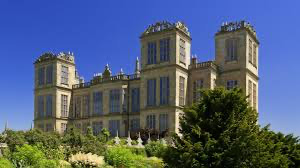

#Hardwick#Hardwick Hall#Hardwick Old Hall#Elizabethan#Prodigy House#career in ruins#National Trust#English Heritage
5 notes
·
View notes
Text
Burgh Castle Roman Fort, near Great Yarmouth, Norfolk.
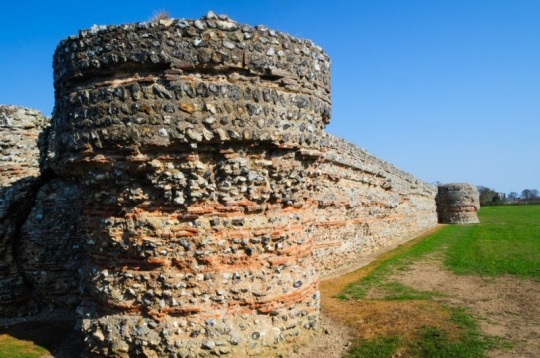
The late 3rd century 'Saxon Shore' fort at Burgh Castle was built as part of the Roman network of coastal defences, and probably abandoned just over a hundred years later. Three of its imposing stone walls survive, almost to their original height, making this one of the best preserved Roman monuments in Britain. The fourth wall collapsed into the surrounding marshes a long time ago.
The land around the fort is a wildlife haven and offers panoramic views over Breydon Water.
It is managed by English Heritage.
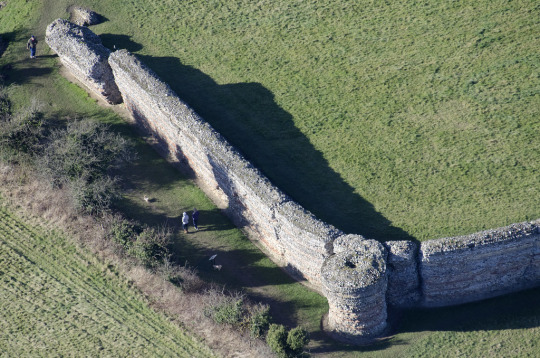
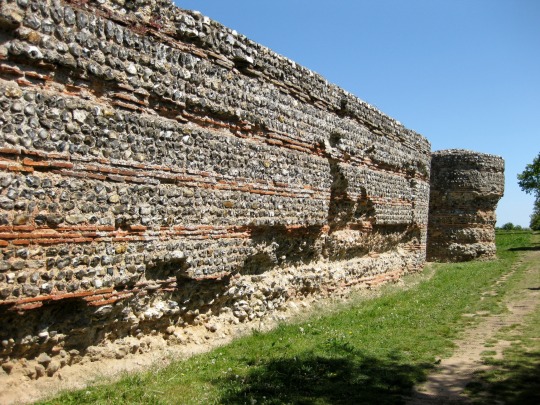
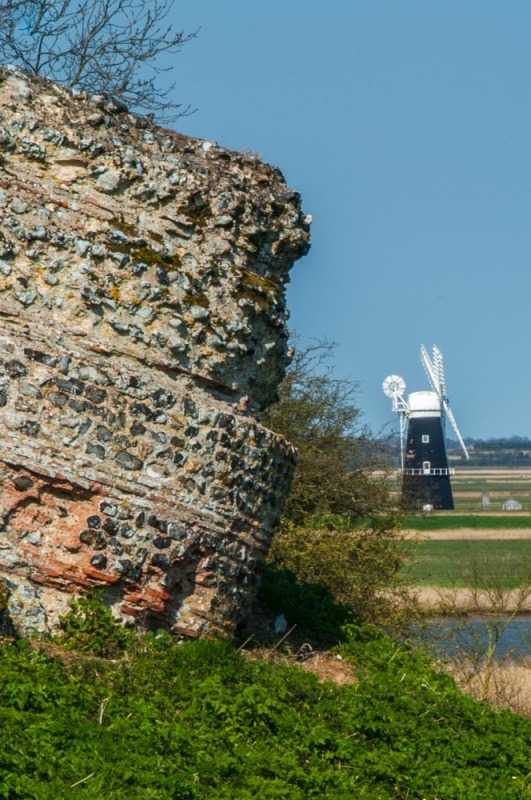
3 notes
·
View notes
Text




Wigmore Castle, Leominster, Herefordshire.
Wigmore was one of many castles built close to the England–Wales border after the Norman Conquest.
Founded in 1067 by William Fitz Osbern, it was a major centre of power for over 500 years, and played host to several kings and queens.
It was held by the Mortimer family from about 1075 to 1425, when it passed to the Crown.
The castle fell into ruin after the Civil War and remained an untouched ruin until the 1990s, when English Heritage conserved it in a way that ensured the castle’s natural environment was preserved.
It is owned and managed by English Heritage.
3 notes
·
View notes
Text





Newarke Houses Museum
Two of Leicester’s most interesting historic houses; Wygston's Chantry House and Skeffington House were both built around 1511 in the area of Leicester which is now at the heart of De Montfort University campus in the city.
These two houses, owned by William Wygston and Thomas Skeffington respectively, will take you on a social history journey with objects dating from Tudor times.
Includes collections of toys from the beginning of the 1500s to the present day, a thought-provoking regimental collection and a recreated First World War trench. They also have a 1950s street scene with its shops and pub where you can hear the stories of people who call Leicester their home.
It is free to visit and is open everyday except over the Christmas period, owned and managed by Leicester Museums & Galleries, part of Leicester City Council.
0 notes
Text



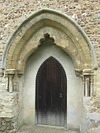

Bushmead Priory, Bedfordshire.
Bushmead Priory is a rare survival of the complete refectory of an Augustinian priory, with a fine timber roof and notable 14th century wall paintings, stained glass set in a beautiful location.
It is managed by English Heritage and open on the first Saturday of each month from May to September.
0 notes
Text

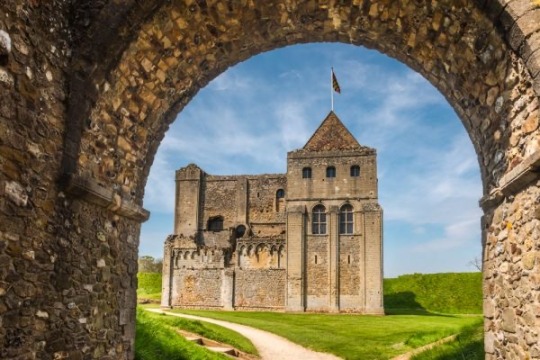


Castle Rising, Norfolk
One of the largest, best preserved and most lavishly decorated keeps in England, surrounded by 20 acres of mighty earthworks.
The castle was begun in 1138 by the Norman lord William d'Albini for his new wife, Adeliza of Louvain the widow of Henry I.
In the 14th century it became the luxurious residence of Queen Isabella, widow (and alleged murderess) of Edward II.
It later became the property of Edward, the Black Prince, one of Edward III’s sons.
It is now owned and managed by Lord Howard of Rising
2 notes
·
View notes
Text
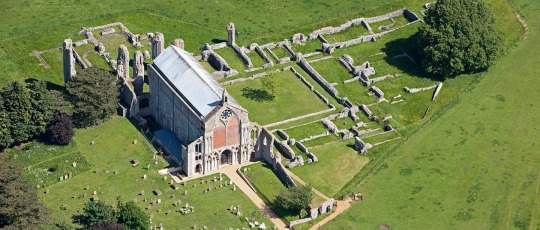


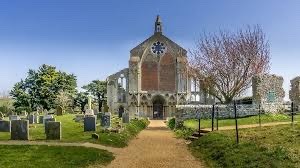
Binham Priory is among the most complete and impressive monastic ruins in Norfolk. This Benedictine priory was founded in 1091 by Peter des Valoines, a nephew of William the Conqueror. Many of its priors were unscrupulous and the history of the priory is one of almost continuous scandal.
It is open to the public, is owned by English Heritage and managed by Binham Priory Church Council
0 notes
Text
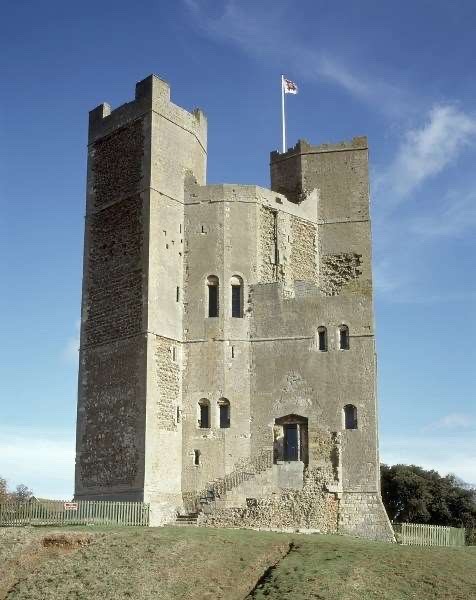
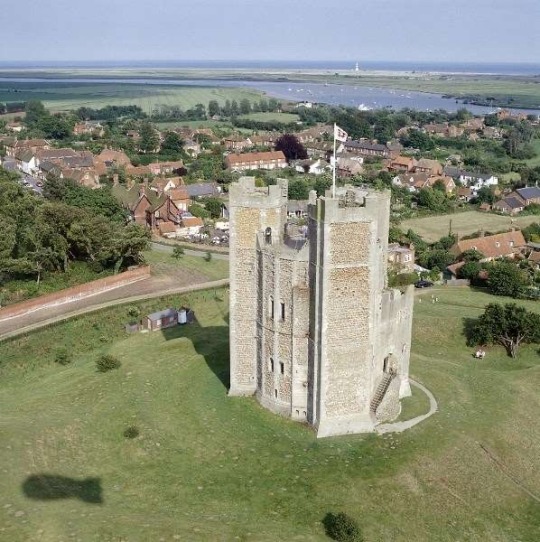

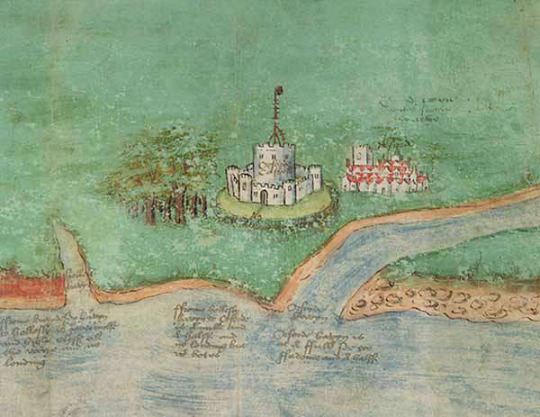
Orford Castle was built for King Henry II between 1165 and 1177, Orford Castle was once a royal outpost on the River Ore’s tidal estuary, in Suffolk.
All that remains of the outpost today is the Castle Keep. The castle’s curtain walls, outer towers and gatehouse were demolished in the 17th and 18th centuries.
The Keep is one of England’s most complete and unusual, with a unique polygonal tower next to the pretty town and former port, which Henry II also developed on the Suffolk coast.
The remains are remarkably intact including the fresh water well in the basement all the way up to the roof with magnificent views of Orford Ness.
It is home to Orford Museum and is managed and owned by English Heritage.
2 notes
·
View notes
Text
King Richard III Visitor Centre
The location of King Richard III’s grave site and a multi-award-winning exhibition about his life, death and one of the greatest archaeological detective stories ever told.
Opened in 2014 less than two years after his remains were discovered under a council car park in Leicester in 2012, opposite Leicester Cathedral which is home to the Tomb of his reinterment in 2015.
KRIII as it is known was created inside a disused Victorian Grammar School adjacent to the grave site, the grave is now covered by an award-winning memorial building that both displays the grave site for the public to see and protects it from the elements, it is also home to the Visit Leicester Tourist Information Centre.
In a Grade II Listed Building and since 2017 listed as a Scheduled Ancient Monument, the site is one of the most significant historical sites in the country.
It is managed and run by Leicester Museums & Galleries part of Leicester City Council’s Arts & Museums Service.



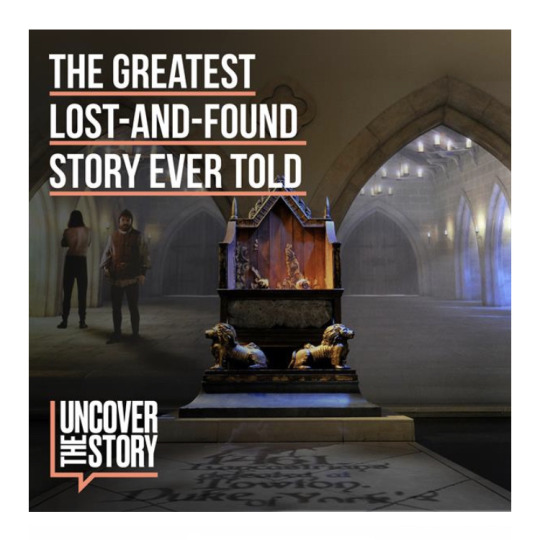



1 note
·
View note
Text
Bolingbroke Castle, Lincolnshire.
On this day 3rd April 1367. The future Henry IV was born (a son of John of Gaunt) at Bolingbroke Castle.
He became the first Lancastrian King of England in 1399.
The remains are of the 13th century hexagonal castle, with adjacent earthworks that were besieged during the English Civil War and taken by Cromwell's Parliamentarians in 1643.
It is owned by English Heritage and managed by Heritage Lincolnshire
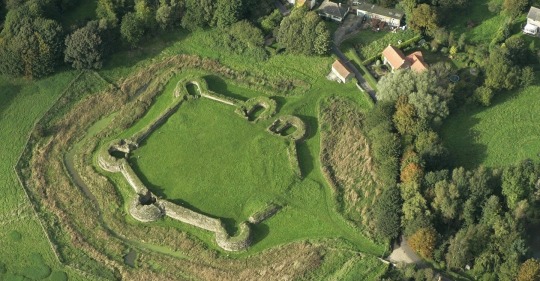
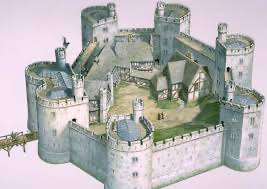
1 note
·
View note
Text
Lincoln Medieval Bishop’s Palace

Standing in the shadows of Lincoln Cathedral, looking down on the ancient city and the Lincolnshire countryside beyond, the medieval bishops’ palace was one of the most important buildings in the country.
The administrative centre of the largest diocese in medieval England, the Bishop’s of Lincoln held sway across the east of the country stretching from the Humber estuary to the river Thames.
The architecture of the palace reflects the power and wealth of the Bishop’s which is complimented by a wonderful simple contemporary garden and vineyard, a peaceful space elevated high above Lincoln with incredible views.
It is owned and managed by English Heritage
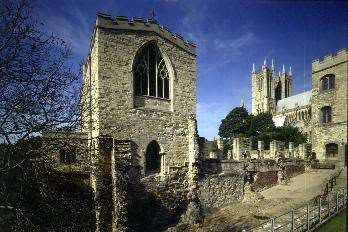
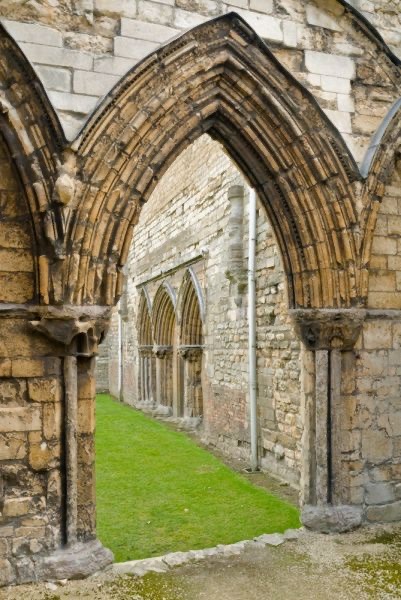
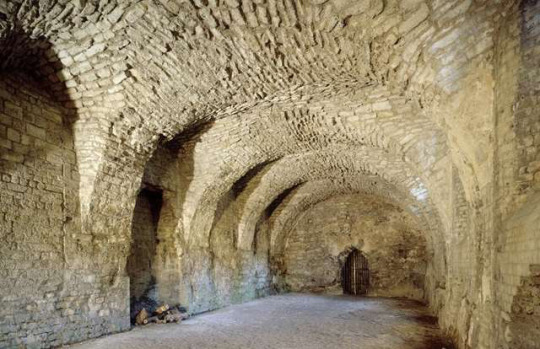

2 notes
·
View notes
Text
Thetford Priory
The Priory of Our Lady of Thetford was one of the largest and most important monasteries in medieval East Anglia. Founded in the early 12th century, for 400 years it was the burial place of the Earls and Dukes of Norfolk, and enjoyed their powerful protection. It was because of this that Thetford was one of the last monasteries to be suppressed when it surrendered to Henry VIII's commissioners in 1540. It is owned and managed by English Heritage.


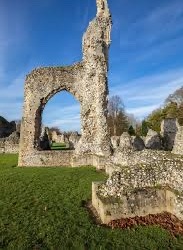

0 notes
Text
0 notes
Text



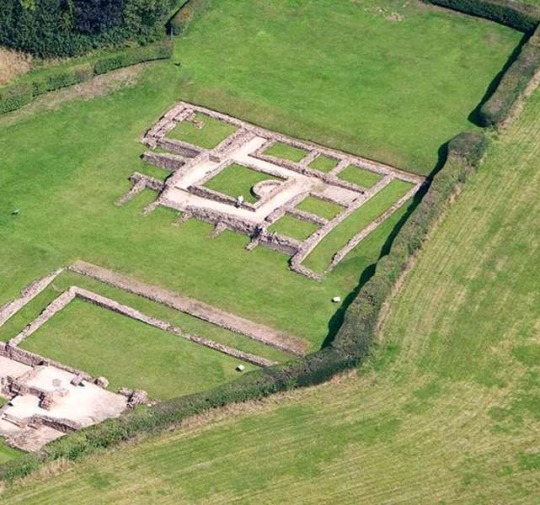

Wall Roman Site is the terraced remains of a Mansio and a Bath House in Wall, Staffordshire.
The Roman’s would have known it as Letocetum, located at the intersection between two strategically important Roman roads – Watling Street and Ryknield Street.
Watling Street (the modern A5) ran from Richborough (Portia Ritupis) in Kent to Wroxeter (Viroconium) in Shropshire (Wroxeter Roman City is another site I used to manage), travelling through London (Londinium) and High Cross (Venonae) in Leicestershire where it crossed another major Roman Road the Fosse Way.
The Imperial Roman army established a series of forts in Wall as part of their campaigns in the west and the north.
After the army left, the site was developed into a staging post with a mansio (an official stopping place on a Roman road, maintained by the central government for the use of officials and those on official business whilst travelling) and a bathing complex.
It is owned and managed by English Heritage.
0 notes
Text


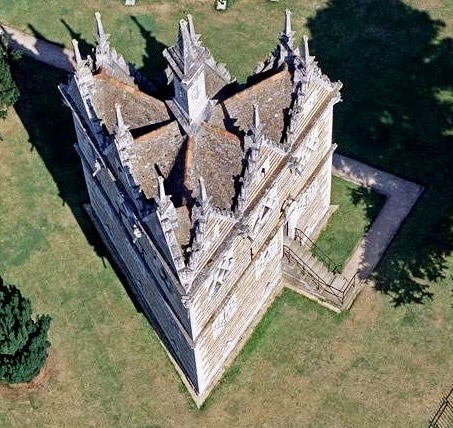


Rushton Triangular Lodge is a delightful triangular building in Northamptonshire, where three is the magic number. Designed by Sir Thomas Tresham and built in the late 1590’s.
It is a testament to Tresham’s Roman Catholicism: the number three, symbolising the Holy Trinity, is apparent everywhere. There are three floors, trefoil windows and three triangular gables on each side.
On the entrance front is the inscription ‘Tres Testimonium Dant’ (‘there are three that give witness’) a Biblical quote from St John’s Gospel referring to the Trinity. It is also a pun on Tresham’s name; his wife Muriel (née Throckmorton) used to call him ‘Good Tres’ in her letters.
Francis Tresham (Robert & Muriel’s eldest son) was one of the Gunpowder Plotters. It is owned and managed by English Heritage.
0 notes
Text

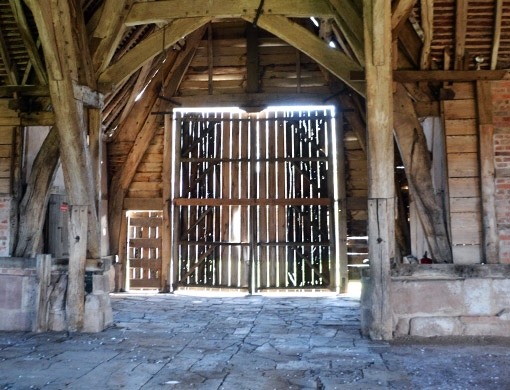


Leigh Court Barn is an outstanding example of English medieval carpentry, and the largest cruck framed structure in Britain. Built around 1325, it is over 42 metres long with 18 cruck blades - each made from a single oak tree.
This barn is the only surviving building from the manor of Leigh Court in Worcestershire, which belonged in the Middle Ages to the monks of Pershore Abbey.
Radiocarbon dating has shown that the timbers for the barn were felled in the spring of 1344, which supports the evidence of carpentry techniques that date the barn to the 14th century.
It is free of charge to visit and is managed by English Heritage.
0 notes
Text



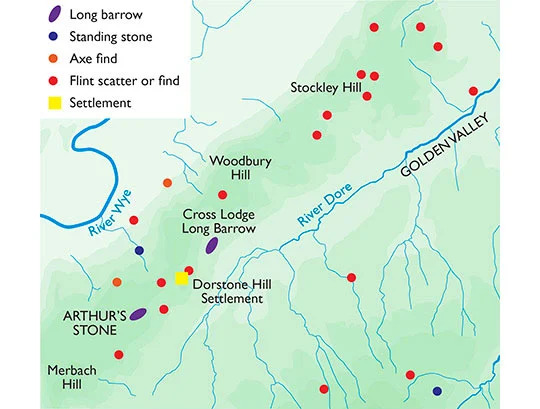
Arthur's Stone is a fabulous pre-historic monument, a Neolithic burial chamber made of great stone slabs with a huge cap stone weighing some 25tonnes that has cracked in half. Set in the hills above Herefordshire's Golden Valley which is rich in prehistoric archaeology.
Like many prehistoric monuments in western England and Wales, this tomb has been linked to King Arthur since before the 13th century. According to legend, it was here that Arthur slew a giant who left the impression of his elbows on one of the stones as he fell.
It has recently been excavated by archaeologists for the very first time (the dig was featured on Digging for Britain on the BBC 2023) and I can’t wait to read the results.
It is free to visit and is owned and managed by English Heritage.
0 notes